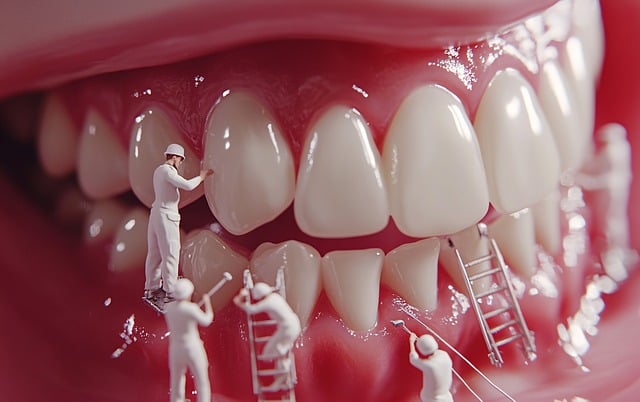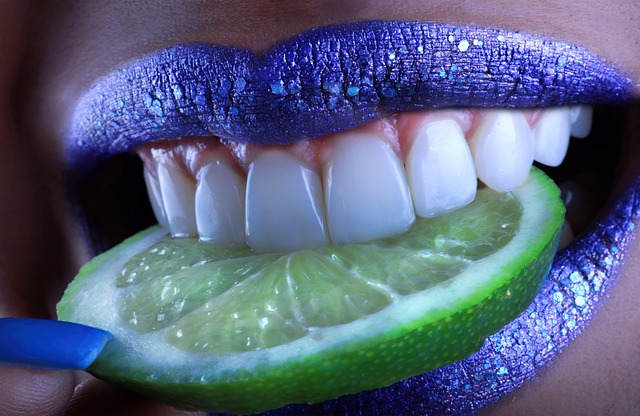Braces, a standard orthodontia treatment for crowded or misaligned teeth, involve various types like metal, ceramic, and invisible braces. Parents should consult experienced orthodontists in Eugene, Oregon, to learn about personalized plans, duration, side effects, and costs. Regular check-ups, proper hygiene, and compliance with recommendations ensure successful outcomes while correcting jaw alignment and enhancing smiles. Cost considerations vary based on brace type and case complexity.
“Eugene, Oregon residents now have a comprehensive guide to navigating braces for both children and adults. This article delves into every aspect of orthodontic treatment, from understanding braces and their types to choosing the right option, managing the process, and addressing benefits, challenges, and cost considerations. We also offer essential care tips for maintaining oral hygiene during treatment. By exploring these insights, parents can make informed decisions and support their loved ones throughout their orthodontic journey.”
- Understanding Braces: A Comprehensive Guide for Parents
- Types of Braces: Choosing the Right Fit for Your Child
- The Process: From Consultation to Adjustment
- Benefits and Challenges: What to Expect During Treatment
- Cost Considerations: Budgeting for Dental Orthotics
- Maintaining Oral Hygiene: Care Tips for Braced Smiles
Understanding Braces: A Comprehensive Guide for Parents

Braces, a common orthodontia treatment, play a pivotal role in straightening teeth and aligning jaws. For parents, understanding this process is essential to supporting their children’s oral health journey. The first step involves recognizing the signs that indicate a need for braces—such as crowded or misaligned teeth—and consulting an experienced orthodontist.
During the initial consultation, parents can expect detailed explanations from the specialist about various types of braces, including metal brackets, clear aligner trays, and invisible braces. They will also learn about treatment plans tailored to individual needs, duration estimates, and potential side effects. Armed with this knowledge, parents can actively participate in decisions, address concerns, and ensure their children’s comfort throughout the brace-wearing period.
Types of Braces: Choosing the Right Fit for Your Child

When considering braces for your child, understanding the different types available is crucial. There are several options to choose from, each designed to address specific oral needs. Traditional metal braces remain a popular choice due to their effectiveness in correcting complex bites. These consist of brackets attached to the teeth, connected by wires that gradually adjust over time, moving the teeth into alignment.
For children who prefer a more discreet option, ceramic or clear braces are an excellent alternative. These use clear or tooth-colored brackets and wires, making them less noticeable than their metallic counterparts. While they may be slightly more delicate, modern advancements ensure their durability. Additionally, there are invisible braces, like Invisalign, which utilize a series of transparent aligner trays, offering both convenience and discreteness for those seeking a virtually invisible solution.
The Process: From Consultation to Adjustment

The journey towards achieving a straighter, healthier smile begins with a consultation at one of Eugene’s reputable dental clinics. During this initial meeting, patients—both young and old—discuss their concerns and goals with an experienced orthodontist. They examine X-rays, evaluate jaw alignment, and consider individual lifestyles and preferences to devise a personalized treatment plan. This collaborative process ensures that every patient receives tailored care, whether they’re considering traditional metal braces or innovative alternatives like clear aligner therapy.
After the consultation, the dentist creates a detailed treatment proposal outlining the recommended braces type, expected duration, potential side effects, and cost estimates. Once approved, patients embark on their orthodontic journey with precise adjustments made to their teeth and mouth. Regular check-ups and adjustments ensure that the braces effectively guide teeth into their new, aligned positions, ultimately transforming smiles and boosting confidence along the way.
Benefits and Challenges: What to Expect During Treatment

Braces in Eugene, Oregon, offer a transformative journey for both children and adults seeking improved oral health and enhanced smiles. The benefits are numerous; they can correct misalignments, improve jaw function, and promote better overall oral hygiene. For many, straight teeth are not just about aesthetics but also about achieving a more confident and healthy lifestyle. However, the path to orthodontic correction isn’t without challenges. Patients often face adjustments during treatment, from getting used to the physical presence of braces to adhering to strict oral care routines. Regular check-ups and compliance with the orthodontist’s recommendations are crucial for successful outcomes.
During treatment, individuals may experience discomfort, especially when adjusting to new brackets or wires. Dietary changes might be necessary to avoid foods that can dislodge or damage braces. Keeping up with daily cleaning routines becomes even more vital to prevent plaque buildup around the appliances. While these challenges exist, the long-term benefits of straighter teeth and improved oral health far outweigh the temporary inconveniences. Many patients in Eugene embrace this journey, knowing it leads to a healthier, more confident future.
Cost Considerations: Budgeting for Dental Orthotics

Getting braces in Eugene, Oregon, involves a significant investment, and understanding cost considerations is crucial for both children and adults planning their oral care. The price of dental orthotics can vary greatly depending on several factors, including the type of brace required, the complexity of the case, and whether it’s a simple correction or part of a more intricate treatment plan.
Braces can be categorized into fixed, removable, and clear aligner options, each with varying cost ranges. Fixed braces, like traditional metal brackets, are generally more affordable in the long term as they offer consistent correction over an extended period. In contrast, removable braces and clear aligners might carry higher upfront costs but provide convenience and a discreet appearance. It’s essential to budget accordingly and remember that regular check-ups and maintenance visits contribute to the overall price of orthodontic treatment.
Maintaining Oral Hygiene: Care Tips for Braced Smiles

Maintaining good oral hygiene is essential for anyone wearing braces, whether young or old. With added care, you can ensure your smiled stays healthy and clean during the bracing period. Start by brushing your teeth twice daily using a soft-bristled toothbrush and fluoride toothpaste. Brush gently but thoroughly, paying extra attention to the areas around the brackets and wires. Flossing is also crucial; use a floss threader or water flosser to navigate carefully around the braces without damaging them.
Regular dental check-ups are vital while wearing braces. Schedule appointments every six months for professional cleaning and examination. Your dentist will ensure your braces remain properly adjusted and remove any plaque or tartar buildup. Remember, good oral hygiene practices not only maintain the health of your teeth and gums but also contribute to a successful bracing experience.






